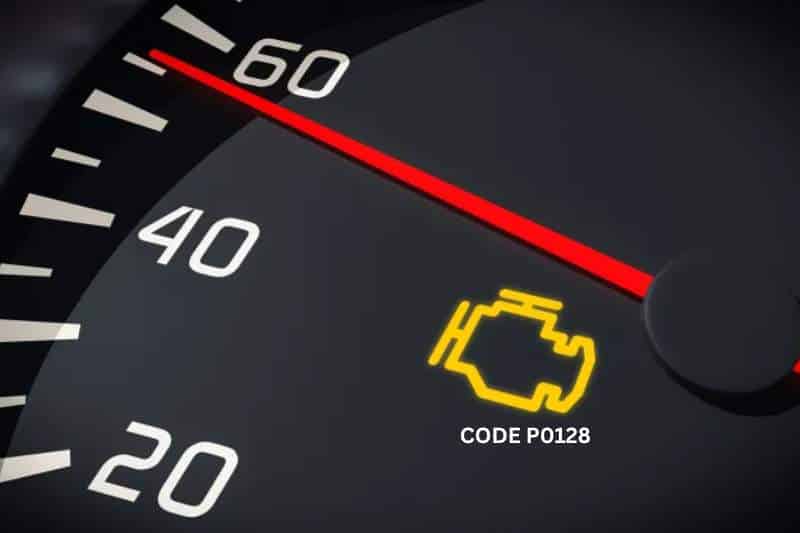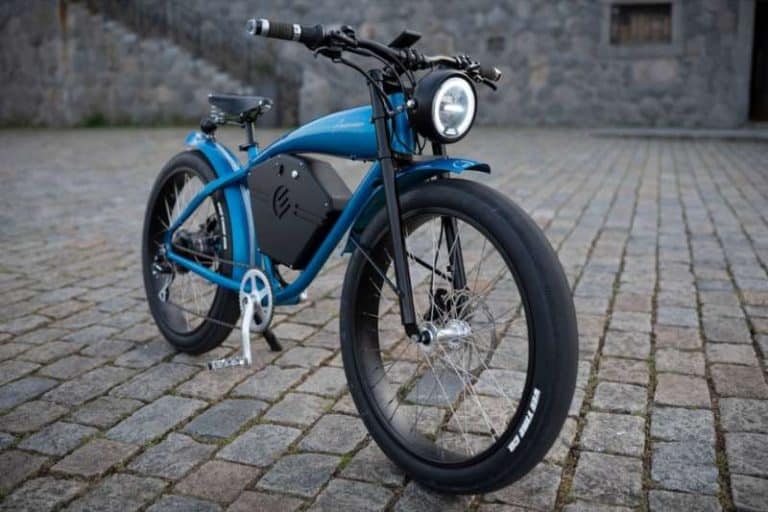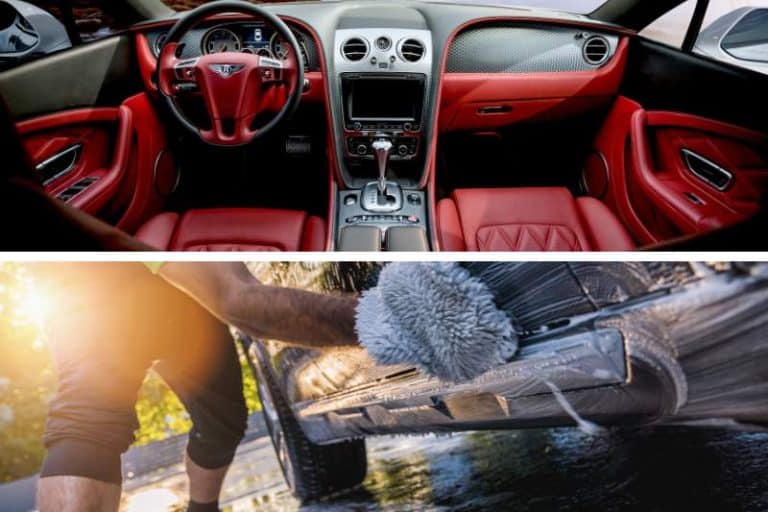CODE P0128 – COOLANT TEMPERATURE BELOW THE THERMOSTAT

OBDII Problem Code P0128 – A coolant temperature below the thermostat throttling temperature means that the engine will not reach its expected temperature even after running it for a sufficient amount of time, or it will take too long to warm up. Often this code causes the Check Engine light to turn on and off in cold temperatures.
Symptoms:
With code P0128, you may have no symptoms or one of the following:
– It takes too long to warm up the engine in cold weather.
– Lower engine temperature when driving on highway
– After the air conditioner and (or) the temperature gauge stops working and (or) the check engine light (GM) comes on
What are the symptoms of my vehicle when I encounter problem code P0128?
- When the vehicle check engine light (CEL), malfunction indicator light (MIL) or service engine instantaneous light comes on and the ECC detects an engine coolant temperature problem, it freezes the saved frame data along with information about the engine sensor data. Problem code P0128 is also written to ECM ROM memory.
- The engine takes too long to warm up (especially on cold days).
Air conditioning heaters may not get hot enough because the engine coolant is used to warm the inside of the vehicle and the coolant does not reach its maximum operating temperature. - The HC (hydrocarbon) odor lingers longer than usual when starting the engine because it does not reach the proper engine operating temperature quickly enough.
Causes:
Common causes include:
– Faulty or sticky thermostat
– The thermostat seal does not seal properly, the coolant bypasses the closed thermostat
– Defective engine coolant temperature (ECT) sensor
– The engine computer (PCM) software needs to be updated.
– Low coolant level
– The radiator fan is still on.
– Defective intake air temperature (IAT) sensor.
What caused my vehicle to set the P0128 trouble code?
The engine control module uses the engine coolant temperature (ECT) sensor to regulate whether to generate the OBD-II P0128. If problem code P0128 is present on its own, the mechanic will usually suspect that the engine coolant temperature sensor is defective or the thermostat is open.
- It has an open or prematurely open coolant thermostat attached.
- Defective engine coolant temperature (ECT) sensor and/or ECT wiring (mostly in ECT connection/harness).
How do I fix the P0128 problem and where do I start?
A good place to start is to check that the engine thermostat is working properly. At first the hose felt cold to the touch and then suddenly became very hot (after about 3-5 minutes depending on the ambient air temperature). If the hose warms up gradually without a sudden rise in the outside temperature of the hose, your vehicle’s thermostat may be open. Make sure that the coolant immediately flows through the radiator from the moment the engine is started and that the coolant in the engine does not get hot enough before opening the thermostat. Replace the thermostat.
If the thermostat is working normally, the next check is the engine coolant temperature sensor. Checking ECT requires a voltmeter and some diagnostic know-how. With ignition on and engine off, check the reference voltage from ECM to ECT. 5 volts should be visible. Take a reading from the ECT signal wire before start engine. As the engine warms up, the voltage on the signal line should decrease. I won’t go into the details of the voltage you need to check here, as the numbers vary from vehicle to vehicle, but at full operating temperature the reading should be 0.5 volts. An important thing to note is whether there is any fluctuation in voltage. Also the reading must be taken after the ECT connector and from the ECT sensor itself. This can determine whether the fault is due to a connection fault and save the cost of replacing the ECT unnecessarily.
- Check that there is no sudden temperature rise in the coolant hose connected to the thermostat housing.
- Check the ECT signal and the reference voltage.
- Check the ECT connector.
How the code P0128 is diagnosed:
First you need to do a basic check under the hood. Is the coolant level okay? Is the engine coolant temperature sensor connector corrosion-free and connected properly? See photo below. The next step is to check that the engine temperature sensor is working properly. If you have a scan tool with real-time data, you should check the engine temperature when the engine is cold and close to the outside temperature. Drive the car for 10 minutes and check the engine temperature again. It should be close to 180-220°F or 82-105°C.
If you don’t have not scanner tool, you can check the engine temperature sensor with the help of ohmmeter.
The resistance of the sensor terminals should change with temperature according to a chart you can find in your service manual.
Testing the thermostat is difficult because it can work in most cases, but it is intermittently fixed. In most cases, the thermostat is replaced whenever code P0128 is present. However, in some cars, the problem can be solved by reprogramming the engine computer (PCM) with updated software.
Common problems that cause code P0128 on other cars:
On many GM cars and trucks (Chevrolet Trailblazer, Silverado, HHR and other models), code P0128 is often caused by a stuck thermostat. On some GM vehicles, when code P0128 is set, the temperature gauge will stop working and the radiator fan will continue running. Replacing the thermostat often solves the problem, unless there are other problems.
The 2007-dated GM TSB recommends reprogramming the PCM as a solution to code P0128 on the 2006 Chevrolet Malibu, Impala, Pontiac G6 and a few others.
The Nissan Technical Service Bulletin (TSB) for the 2007 Nissan Altima and Sentra dated April 2009 mentions using a search tool to determine the part number of the engine computer and reprogramming if the part number matches one of the numbers listed on the bulletin. There is.
On some older Mazda 3 and Mazda 5 year olds, code P0128 may be caused by improper calibration of the PCM (engine computer) according to the Mazda service bulletin. The solution is to reprogram the PCM with the updated software, and some Mazda 3s made before 2004 even replace the thermostat with the updated part. I found two Chrysler technical service bulletins for several Jeep and Dodge models that recommend reprogramming the engine computer (PCM) once code P0128 is diagnosed.
Another Chrysler TSB for the 2009-2010 Dodge Challenger and 2008-2010 Dodge Magnum/Charger and Chrysler 300 describes an issue where the thermostat may get out of place and allow coolant to pass through, setting code P0128. The solution is to add a shim and replace the thermostat housing with the updated part.
How the thermostat works:
The thermostat is a temperature operated valve installed in the vehicle cooling system. Controls coolant flow through the radiator and prevents overheating.
The thermostat is a temperature operated valve installed in the vehicle cooling system. Controls coolant flow through the radiator and prevents overheating. When the engine is cold, the thermostat (main valve) closes. There is no flow through the radiator. The smaller bypass valve is open and coolant only circulates inside the engine and through the vehicle heating system. As the engine approaches operating temperature, the thermostat slowly opens, allowing coolant to flow through the radiator. In cold weather, the thermostat closes again when the engine temperature approaches the lower limit of its operating range (194°F or 90°C).
Can I drive a vehicle with a P0128 trouble code and an illuminated CEL?
- The vehicle can be driven with P0128 trouble code. You won’t find any problems except that the temperature gauge doesn’t reach normal levels and the check engine light comes on. Also, if the vehicle requires a smog check, the test will fail because it has a P0128 trouble code and the check engine light is on.
- The check engine light or malfunction light is on while P0128 is being written to the ECC.
For More Information Visit lifestylebuz.com






